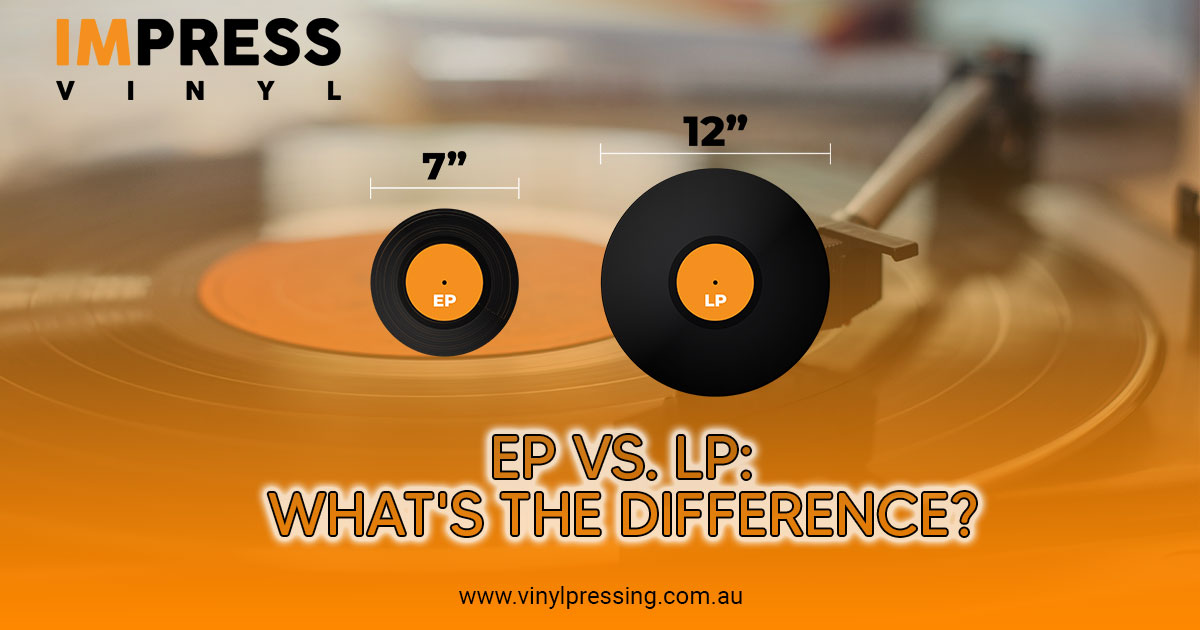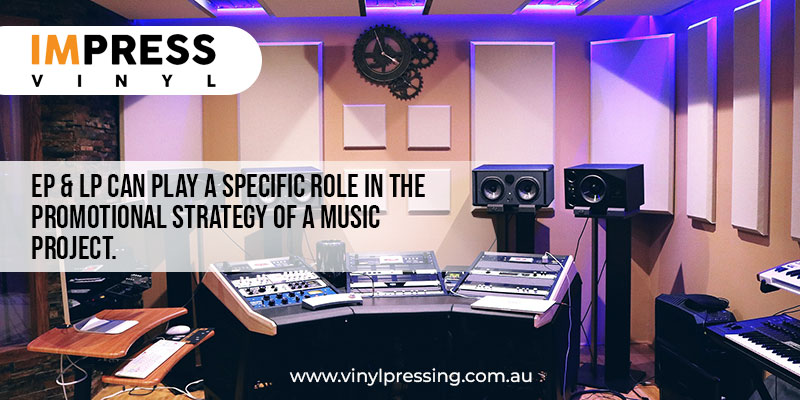EP vs LP Vinyl Records. What’s the Difference

If you are a music enthusiast, you might have noticed various music album formats, and artists choose various formats for different purposes for their music albums. Most of the formats including EP vs LP from late 50s commercial vinyl releases.
When albums became famous, most artists and independent labels created albums that would fit into a specific amount of time on both sides of the vinyl due to affordability and physical limitations.
First, you need to understand the terms of EP vs LP, which originally came from the vinyl record formats. Whether you are a music enthusiast or entering the music industry, or learning the music terms, LP vinyl records and EP vinyl record formats are essential to understand.
Surprisingly, audiophiles are listening to music more than ever. A typical Long Playing vinyl record would be 12-inches in diameter, and a single Extended Play vinyl would be 7-10 inches in diameter, but these variations change in size over the years.
EP vinyl records often went into customizations in shapes and colors because it was an excellent tool for marketing. There are subjective experimental associations about the format.
Let’s discuss the Long Playing vinyl records and Extended-play vinyl album formats, how they will fit with the modern music contrast for music artists, and how it’s an essential tool for promoting an album release.
What is an LP Vinyl Record?
In short, an LP stands for “Longest Play” vinyl record. In the late 90s, the term LP was synonymous with the 12-inch standard photographic vinyl record players, played at a speed of 33.3 RPM (Round Per Minute).
As the music industry evolved and the latest technology came in, an LP vinyl record is now referred to as a full-length album. The duration differs from various pressing plants due to the rise of the modern digital audio format.
What is the length of LP vinyl records?
In the late 90s and 00s, an LP vinyl record would fit around 15-22 minutes of high-quality music per side of a 12-inch vinyl record played at 33.3 RPMs. This means an entire Long Playing vinyl records album would range from 30-44 minutes, and it was followed for all typical LP vinyl records with compact discs and cassette tapes.
This was the most comfortable and affordable music format for artists, with 10-12 songs around 3-3.5 minutes long each. But in today’s digital age, the time limitation is slowly being overlooked. Many independent artists are releasing higher-length albums while others are choosing shorters ones.
What is an EP Vinyl Record?
In short, an EP stands for “Extended Play” vinyl record. In the late 90s and present, an Extended Play vinyl record indicates the release of a mini album, about half of the entire Long Playing vinyl records album, but it is longer than a single album.
As modern digital technology evolved, many independent artists and labels chose the EP Vinyl records format for their albums. An Extended-play vinyl album has its benefits, including promotional and budget, and mainly it is appealing to die-hard vinyl fans.

What is the length of EP vinyl records?
All the popular vinyl record pressing plants in the past were predominantly producing records based on the number of tracks falling in the range of 3-6 songs max in the tracklist. The Extended-play vinyl duration would fall under 15-22 minutes, and various pressing plants have different song count and playlist time range according to the requirements.
In the modern vinyl format, a typical vinyl record pressing in Melbourne has general expectations, with the EP vinyl record length between 3-6 audio tracks ranging from 15-30 minutes long. Vinyl pressing is a customized vinyl record maker in Australia that primarily focus on high-quality products, audio formats, and the purpose of the release.
Why it’s essential to know the difference between LP and EP vinyl records ?
In the modern digital era, custom vinyl records are gaining popularity again, taking over CD and DVD sales.
While everyone is obsessed with online streaming to listen to their favorite music, vinyl lovers are passionate about customized vinyl. A physical record can be owned in their home and listened to on a comforting chair.
EP vinyl records are often used as a promotional tool. Popular labels and independent artists use them to highlight songs or singles from the artists’ catalogs as marketing or publicity tools.
Singles were often re-released as Extended-play vinyl records and had the advantage of adding demos, extras, and remixes. Today an EP is most common to make entirely new songs in different formats that complement an artist’s catalog.
Meanwhile, artists and labels must meticulously plan the length to increase the medium, track sequencing, and more for an LP vinyl record format.
Adding a track to the Long Playing vinyl records would mean surrendering the track sequence’s impact and audio quality. Full-length albums like the LP vinyl records uncommonly contain bonus tracts, extras, or remixes.
Conclusion
In the EP vs LP debate, both are different yet similar formats and can be on vinyl, CDs/DVDs, cassettes, and digital downloads. For remembering purposes, an EP vinyl record is half of an album, and an LP vinyl record is a full-length album.
Vinyl pressing is a vinyl record maker in Australia committed to delivering high-quality vinyl records with short runs at affordable prices. Whether an EP or LP album for your next release, reach out to the vinyl record pressing plant in Melbourne to get a custom quote and deliver all around Australia.